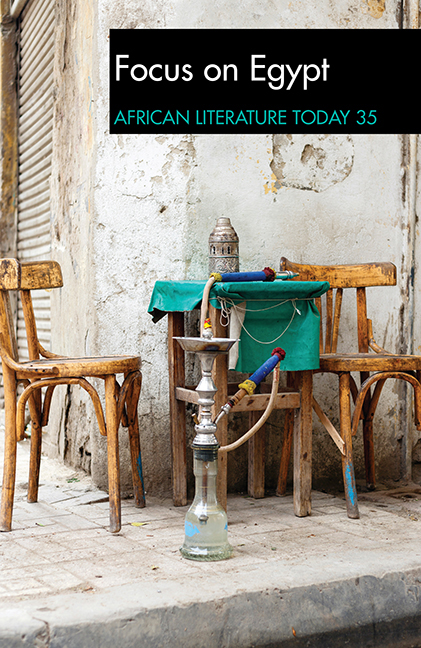Book contents
- Frontmatter
- Dedication
- Contents
- Notes on Contributors
- Foreword
- EDITORIAL ARTICLE
- ARTICLES
- FEATURED ARTICLES
- LITERARY SUPPLEMENT
- TRIBUTE
- REVIEWS
- Mohammad Rabie, Otared. Translated from Arabic By Robin Moger
- Yasser Abdel Hafez, The Book of Safety. Translated from Arabic to English by Robin Moger
- Sanya Osha, On A Sad Weather-Beaten Couch
- Adam Mayer, Naija Marxism: Revolutionary Thought in Nigeria
- NoViolet Bulawayo, We Need New Names
- Okey Ndibe, Never Look An American in the Eye: Flying Turtles, Colonial Ghosts, and the Making of a Nigerian American
- Reviews of Nigerian Poetry
Sanya Osha, On A SadWeather-Beaten Couch
from REVIEWS
Published online by Cambridge University Press: 24 August 2019
- Frontmatter
- Dedication
- Contents
- Notes on Contributors
- Foreword
- EDITORIAL ARTICLE
- ARTICLES
- FEATURED ARTICLES
- LITERARY SUPPLEMENT
- TRIBUTE
- REVIEWS
- Mohammad Rabie, Otared. Translated from Arabic By Robin Moger
- Yasser Abdel Hafez, The Book of Safety. Translated from Arabic to English by Robin Moger
- Sanya Osha, On A Sad Weather-Beaten Couch
- Adam Mayer, Naija Marxism: Revolutionary Thought in Nigeria
- NoViolet Bulawayo, We Need New Names
- Okey Ndibe, Never Look An American in the Eye: Flying Turtles, Colonial Ghosts, and the Making of a Nigerian American
- Reviews of Nigerian Poetry
Summary
At thebeginning of Sanya Osha's On a Sad Weather-BeatenCouch, Ade Bantan lies on a sofa ‘in hisgirlfriend's room fanning himself and trying to seize on ameasure of coolness. He had nowhere to go.’ More than twohundred pages later, at the end of the novel, he finallyvacates the couch that he had inhabited throughout most ofthe narrative and walks out on his girlfriend, Enitan.Interestingly, he is roused out of his inertia by jealousy,among other considerations. When he hears Enitan angrily sayor misspeak that she ‘didn't mind if she had to sleep withevery cop and attorney needed to achieve her aim’ (to punishPapa Osaze, who had duped her), Ade ‘understood why Enitanconfused memories of her other lovers with theirs’. In histhinking, ‘every one of her memories of romance wasinterchangeable to her and it did [not] matter as long asshe had a man.’ In leaving Enitan, Ade also flees ‘from asinking neighborhood riddled with vigilante gates, orphanedstreet urchins, and cacophonies that didn't make sense andperhaps weren't ever meant to’. Between these two states ofbeing or consciousness – Ade on the couch and Ade in flight– is a character study that focuses on athirty-seven-year-old artist who is apparently withoutprospects, even though everyone had once believed that hewas ‘destined for impressive things’. But the novel is notsimply about Ade's current ‘creative cul-de-sac’. Oshamanages – by the introduction of related as well asrelatable incidents and spatializing tale-tellers – toexpand a portrait of an individual crisis into a noirishpainting of a neighbourhood's existential dilemma that isalso a figuration of a national (or African) dystopia.
The choice ofAde and Enitan as central characters is pivotal to thestructural dynamics of On a Sad Weather-BeatenCouch. Ade is inclined toward creativity andtranscendental essences. He is rather disdainful of themindless materialism all around him, which in his perceptionhas transformed people into corpses: ‘Corpses everywhere.Zombies. Corpses as fathers of the nation. Corpses disguisedin robes of laughter and gaiety.’ Enitan is initiallypresented as an opportunist who envisions a relationshipwith Ade as her passport out of the urban jungle and thedaily grind that she is trapped in. But their relationshipgrows in irony as the narrative progresses.
- Type
- Chapter
- Information
- ALT 35: Focus on EgyptAfrican Literature Today 35, pp. 286 - 292Publisher: Boydell & BrewerPrint publication year: 2017

